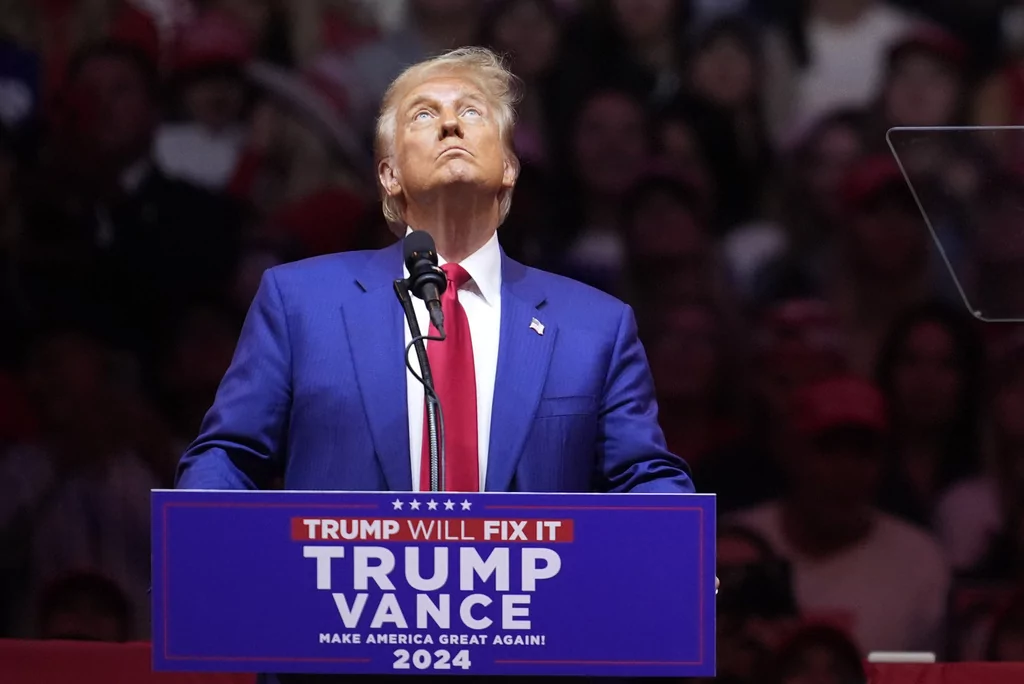

President-elect Donald Trump pulled off a stunning political realignment in his successful 2024 campaign, one that the Republican Party will hope to maintain in future elections.
Trump outperformed his 2020 numbers in 49 of the 50 states, did better with Hispanics than any Republican since at least 1972, won the popular vote for the GOP for the first time in 20 years, and even improved with women voters despite the Kamala Harris campaign’s heavy focus on that demographic.
“There will be multiple books written about this going forward, about what he was able to achieve,” Trump campaign senior adviser Corey Lewandowski told the Washington Examiner. “These [results] are all real. They’re not anecdotal, they’re empirical. So when you look at what was achieved because of Donald Trump’s success, you have to say, ‘boy, that was pretty amazing.”
The Democratic Party, on the other hand, was revealed at least for this election to be the party of the college educated and of high-income voters earning more than $100,000. She performed best among those groups, and one of the only places where she improved on President Joe Biden’s 2020 performance was in Washington D.C. Biden got 92.2% of the vote in the nation’s capital four years ago, and Harris is on pace to get 92.5% this time around.
Of course, much of Trump’s campaign has centered on anti-DC rhetoric. He’s promised to “drain the swamp” of government insiders and purge the “deep state” of Washington bureaucrats in a second term. Democrats will have to do some soul-searching ahead of the 2026 midterm elections and the 2028 presidential contest.
“Democrats need a full engine overhaul not just a tune-up,” Rutgers University political science professor emeritus Ross Baker said. “The tires are shot, the body is rusty, and it won’t pass inspection. Above all, it needs a new driver.”
Democrats may be most astonished that Trump earned 45% of the Hispanic vote, including a majority of Hispanic men, after pushing so hard against illegal immigration in all three of his campaigns. Starr County, Texas, a border county that is 97% Hispanic, backed Trump by a 58% to 42% margin. In 2016, the same county went for Hillary Clinton 79%-19%.
For years, the narrative from Democrats was that demographic changes in the United States would lead to a permanent majority for their party. Political scientist Ruy Teixeira’s 2002 book “The Emerging Democratic Majority” became famously emblematic of this way of thinking, predicting that shifting demographics would make things tougher and tougher for Republicans over the years.
But Teixeira now works for the conservative American Enterprise Institute and is writing about those same voters drifting to the right.
“The Democrats really are no longer the party of the common man and woman,” he wrote this week. “The priorities and values that dominate the party today are instead those of educated, liberal America which only partially overlap—and sometimes not at all—with those of ordinary Americans.”
He instead argues that the GOP has transformed itself into the party of the working class, with race less of a deciding factor than was previously believed.
That phenomenon was apparent in Harris’s struggles with union workers. The International Brotherhood of Teamsters and the International Association of Fire Fighters both declined to endorse Harris after backing Democrats for decades, with the Teamsters releasing an internal poll that found almost two-thirds of its membership supported Trump.
“I think the Democratic Party needs to run back to becoming more of a center-left party, where it has thrived,” said Dan Bowling, who teaches labor courses at Georgia State University. “It might need to tell the progressives, the hard-core 2 percent on the far left, to shut up for a while.”
Some union workers seem to agree. A steelworker who spoke to USA Today posited that “The steelworkers didn’t leave the Democrats… the Democrats left the steelworkers.”
But no political realignment is truly permanent and Democrats are already looking to regroup as Republicans celebrate their gains with the non-white and blue-collar electorate.
CLICK HERE TO READ MORE FROM THE WASHINGTON EXAMINER
Former U.S. Representative from Florida Carlos Curbelo thinks that Democrats will now need to refocus on a unifying message, rather than one that appeals separately to different groups based on their identity.
“People are looking for all these policy explanations, ‘which policies does Trump support that people like?’” he told MSNBC’s Morning Joe. “It’s really more about culture. It’s really more about the way he addresses the country. In an odd way, I think it’s unifying, whereas Democrats have really kind of fractionalized the country and tried to win all these different coalitions.”
Marisa Schultz contributed to this story.






